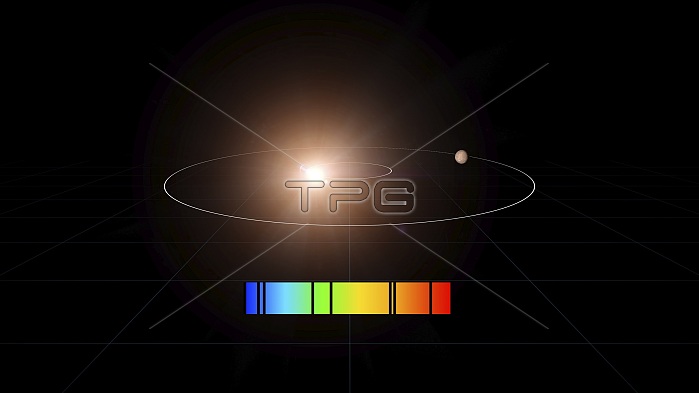
Illustration showing how the radial velocity method (also known as Doppler spectroscopy) can be used to detect extrasolar planets (exoplanets). The radial velocity method relies on the fact that a star does not remain stationary when it is orbited by a planet, but responds to the gravitational pull of the planet. When viewed from a distance, these slight movements affect the star's normal light spectrum (shown at bottom). If the star is moving towards the observer, then the spectrum would appear slightly shifted towards the blue; if it is moving away, it will be shifted towards the red. Using highly sensitive spectrographs, a star's spectrum can be tracked over time. Regular, periodic shifts towards the red, blue, and back again indicate the presence of a body orbiting the star. Transit methods for detecting exoplanets can provide an estimate of a planet's size, but not the mass. Using both methods, combining mass and size, the planet's density can be calculated which is an important
| px | px | dpi | = | cm | x | cm | = | MB |
Details
Creative#:
TOP25064728
Source:
達志影像
Authorization Type:
RM
Release Information:
須由TPG 完整授權
Model Release:
N/A
Property Release:
N/A
Right to Privacy:
No
Same folder images:

 Loading
Loading